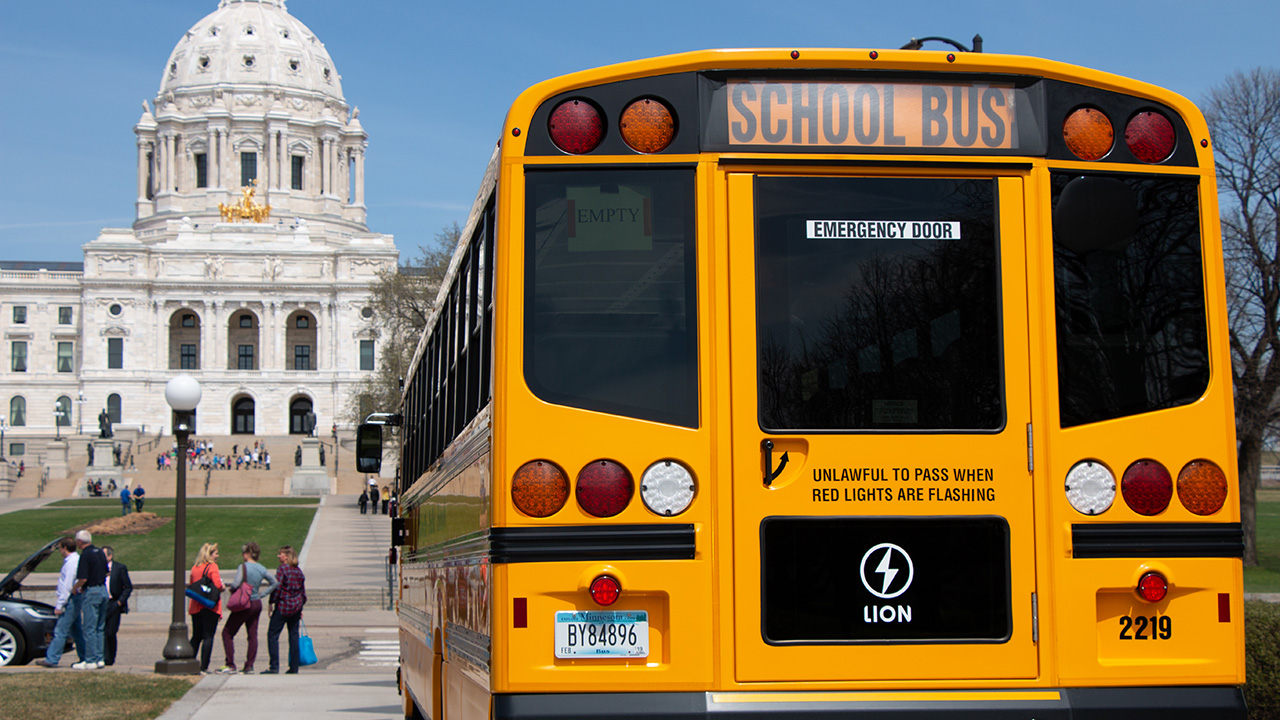
Electric vehicles (EVs) have been dominating the spotlight—especially since Minnesota broke new ground for cold-weather states in 2021 by adopting clean car standards. But it is time for single occupant EVs to get in the passenger seat as the next big thing—electric buses—take the wheel.
Incoming investments in public transportation
With over $800 million in funding for public transportation heading to Minnesota from the Bipartisan Infrastructure Law—not to mention an additional $2.5 billion in competitive grants for electric transit buses—the time is now for cities and counties to establish electric bus goals and policies that ensure they get a piece of the pie.
So far, Minnesota’s largest transit agency, Metro Transit, is leading the way with its newly released Zero-Emission Bus Transition Plan that lays out its bus fleet electrification plans for the next five years. But others are getting on board too. More than 47 school districts in Minnesota applied for Minnesota Pollution Control Agency grants for electric school buses, and pilots are already underway in the Osseo, Lakeville, and Eastern Carver County school districts.
Tapping more federal funds
While the influx of federal funding is exciting, it is not all cherry pie—or at least not yet. In many cases, matching funds will be needed to unlock the full potential of the Bipartisan Infrastructure Law. Fortunately, here in Minnesota we have the opportunity to reduce that barrier by allocating a fraction of Minnesota’s $9.3 billion surplus to match these federal grants and invest even more in our shared clean energy future.
This is where you come in! We need Minnesotans to act and tell their legislators that this is an investment that would have significant, long-term statewide returns. And Minnesota’s local and regional leaders have a key role to play too, by planning for electric transportation and making sure it is included in local climate and transportation plans.

